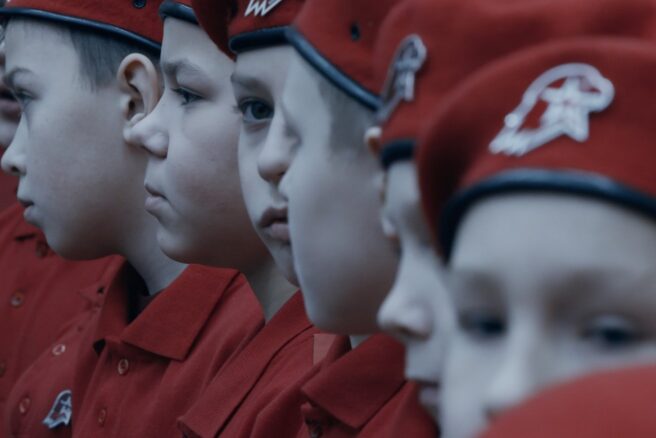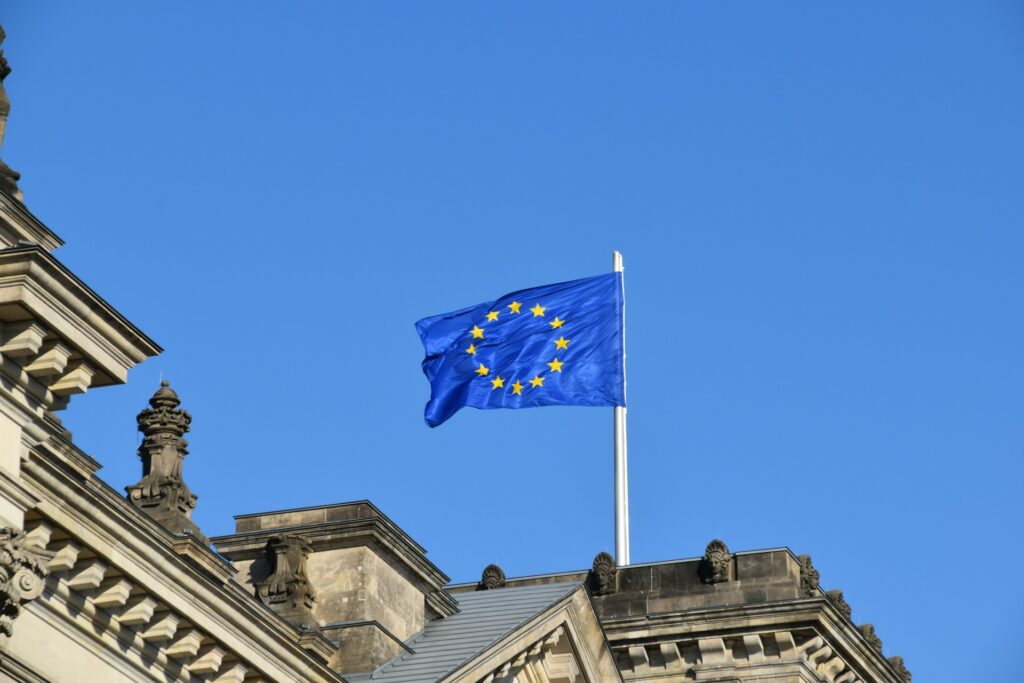The documentary film Immortal will be shown in Docpoint film festival on Wednesday Jan 29th, Friday Jan 31st and Sunday Feb 2nd. Here is a link for more details on the film and screenings.
Ksenia Okhapkina’s ’Immortal’ is a somber reflection on themes of continuity, change, and Soviet heritage in contemporary Russian society.
Ksenia Okhapkina opens her documentary to direct the viewer’s attention towards a particular argumentation: GULAGS (an acronym for Glavnoe upravlenie ispravitelʹno-trudovykh lagereĭ – Main Administration of Corrective Labor Camps) were established to industrialize the Russian north. They were prison camps for forced labor, inherently tied to war production.
Okhapkina’s documentary continues to argue that when Stalin died in 1953, the social system opened, but yet, remnants of ‘Stalinist culture’ remained– how does this heritage continue to impact contemporary Russian society in its regions? Okhapkina answers this question through thematic discussions of place, time, memory, and ideology, seemingly leading her viewers to conclude that Soviet heritage subconsciously shapes the everyday life of contemporary Russians.
Soviet Modernity and Russian Regions
At the beginning of the documentary, the viewer is introduced to a windswept, frozen polar landscape. This introduction places nature and place as a subconscious thematic premise as the viewer enters Okhapkina’s documentary.
Okhapkina’s production takes the perspective of an outsider passing through the lives of inhabitants of an unnamed Russian city. Aside from fleeting references to the ‘Murmansk oblast’ (region), a sense of uniformity rather than uniqueness is presented from the outset. Okhapkina’s narrative could be associated with any 21st century Russian provincial city of the north.
Citizens are not introduced, but rather presented as pieces of a system. Industry is portrayed as a common symbolic backdrop to everyday existence in the town. Faceless people are often pictured utilizing heavy industry to conquer the harsh environment of the Russian north.
The theme of human mastery over nature (anthropocentrism), arguably a predominant feature of Soviet modernity, is presented as central for existence and continuation of life in northern, provincial Russia.
Shifts from Soviet Society to Contemporary Ideology
Within the frame of human mastery over nature, social structures that supported a Soviet social crusade of modernization, such as youth organizations, are a central focus of Okhapkina’s work. The youth army (I͡Unarmii͡a) and classical ballet groups are representative of primary locations of social activity.
Groups are mainly divided, boys and men in the youth army and females as dancers. This is one of the many subtle aspects that invites viewers to question how Soviet social traditions are utilized in contemporary Russia for social mobilization, but amended to promote slightly different values.
For example, official Soviet discourse on gender may have been focused on greater gender equality. Certain contemporary Russian narratives on the other hand may put more emphasis on ‘traditional’ delineations of male-female gender roles.
Regarding ideology, the youth army for example, seems eerily similar to the Pioneer and Komsomol movements of Soviet times. The Ministry of Defense paradoxically states, the youth army’s main difference from the Pioneer movement is that it is not ideological – it only promotes love for one’s country.
Rather than learning communist ideology and preparing to join the party, the youth army teaches children military tactics, history, and discipline in preparation for the possibility of becoming military cadets. Okhapkina conversely presents the youth army to highlight the ideological significance of collective memory of the Great Patriotic War (a more common name for the Second World War in Russia) as a tool of socialization and meaning making.
The documentary offers reflections on the differences between the youth army and the pioneer movement, as well as ideology and nationalism in particular.
Socialist Realism as a Frame
These motifs of industry, social life, and ideology seem to critique contemporary Russian society by offering nuances of socialist realism: the predominant style in Soviet art, which depicted communist values and the emancipation of the proletariat.
There is an overarching sense that aside from work, there is little choice of social activity in the secluded town of Okhapkina’s documentary.
This background of socialist realism creates a feeling of an impersonal narrative. Because of this, there is an overarching sense that aside from work, there is little choice of social activity in the secluded town of Okhapkina’s documentary. People are shown going in and out of their Soviet style housing blocks, like ants going into a hive.
Personal lives or the insides of apartments are never shown. This framing of personal life, alongside the youth army and the background of industrial modernization, plausibly highlights Okhapkina’s social critique that social participation is not for the wellbeing of the individual, but for that of the country.
Meaning Making and the Great Patriotic War
Commemoration and memory of the Second World War has been both instrumentalized and forgotten in various ways during the Soviet Union and the Russian Federation. The uniformity of the youth army’s commemoration of the Great Patriotic War is a subtle marker for reflection on politics of memory in contemporary Russian society.
As time passes, the subjects of the documentary prepare for a commemoration of 9 December, Heroes of the Fatherland Day – a holiday reinvented in 2007 by the Russian State Duma in line with contemporary memory politics of the Great Patriotic War in Russia. The holiday is distinctly military in nature.
Okhapkina’s focus on commemoration and ceremony further offers a thematic commentary on time, something seemingly defined and marked by state defined holidays, rather than place.
The uniformity of the youth army’s commemoration of the Great Patriotic War is a subtle marker for reflection on politics of memory in contemporary Russian society.
This provokes reminiscence of totalitarian societies stuck in time. Holidays and official celebrations become the only markers signifying that time was not frozen in place. Though the Russian Federation is a modern market economy of the 21st century, in Okhapkina’s work time is ostensibly defined in terms of state memory politics.
Okhapkina’s documentary style, focus on place, as well as social commemoration of the Great Patriotic War are key themes in Immortal. These threads bring questions of change and continuity between Soviet, Imperial Russian, and contemporary Russian society into focus for the acquainted viewer.
Bradley Reynolds is a doctoral student of political history at the University of Helsinki’s Aleksanteri Institute. His researcher delves into Russian and Finnish expectations of European security in the 1990’s by looking at the Conference of Security and Cooperation in Europe (CSCE).
Helsinki Documentary film festival is held from January 27th to February 2nd, 2020.




